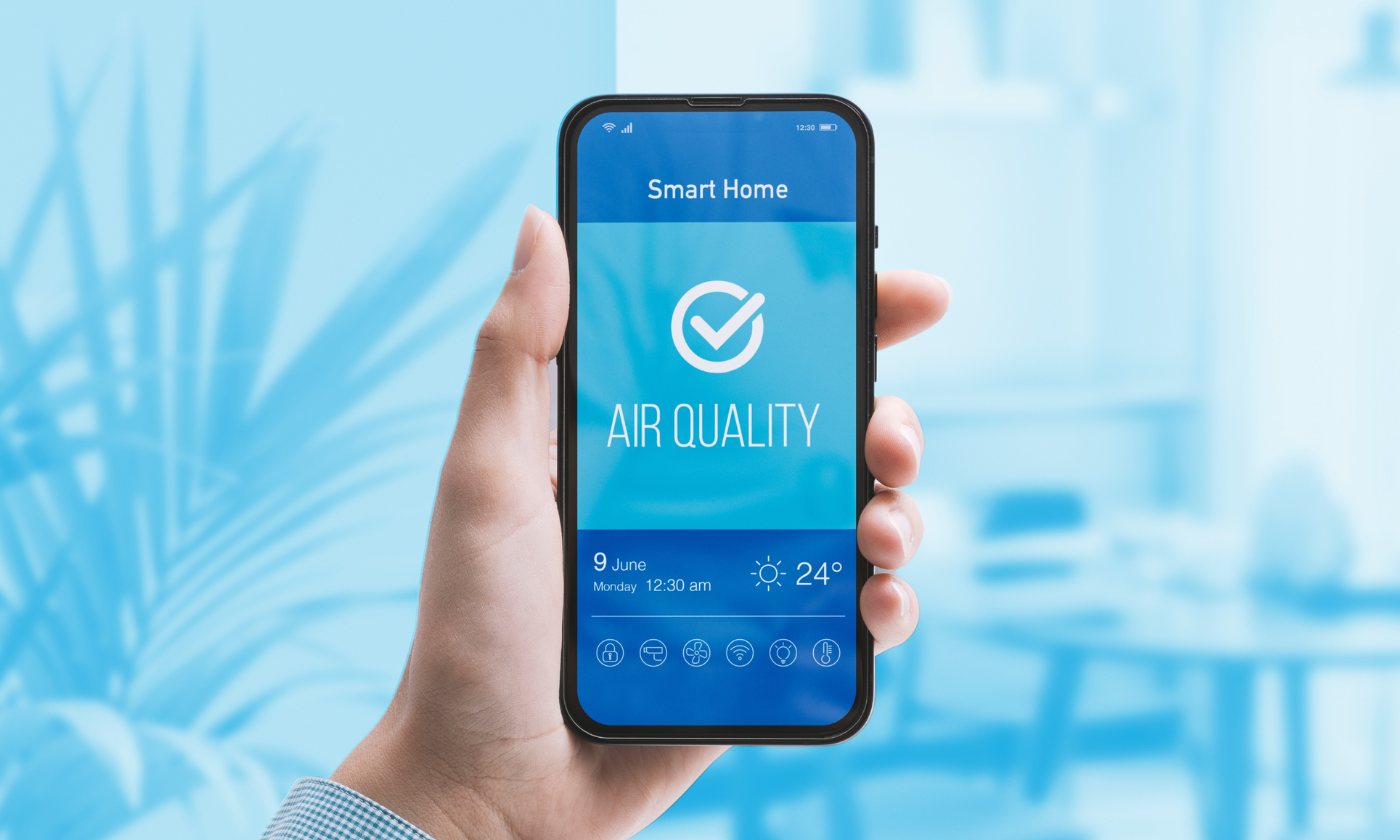Outdoor air quality and allergies that come with it are a hot topic now, especially with the large amount of wildfire smoke coming from Canada into the US. Many are seeking cover indoors, but it’s worth noting that most don’t realize the air quality inside their own homes could also have a major affect on their health too, so it’s important to be aware.
Nowadays, people spend the majority of their time indoors, where concentrations of pollutants can be two to five times higher than typical outdoor pollutants, according to the EPA. Natural gas leaks add to this problem as well. Natural gas appliances in the home can even release harmful pollutants into the air, especially for cooking at high temperatures, which can be toxic to people and pets. Without proper ventilation, the effects of indoor pollutants can increase significantly, making breathing in your home a hassle.
Needless to say, it’s vital to ensure your home is as safe and comfortable as possible for you and your loved ones. Multiple factors can affect your home’s air quality, including its location, weather conditions, outdoor climate, and so on.
The good news is there are effective ways to address poor indoor air quality immediately. First, it’s essential to understand what pollutants could be behind your poor air quality indoors.
Pollutants That Impact Air Quality
Besides natural gas leaks, a few other pollutants can cause or contribute to a decline in your health and reduce the air quality in your home. The most common pollutants you must watch out for are:
- Carbon Monoxide: A colorless, odorless, and tasteless gas produced when fuel, like natural gas, is burned. CO causes flu-like symptoms such as headaches, dizziness, and fatigue in high concentrations.
- Carbon monoxide poisoning often occurs due to improper ventilation or malfunctioning natural gas appliances such as furnaces, ranges, and water and room heaters.
- Particulate Matter: Tiny airborne pieces of dust, dirt, soot, smoke, droplets of liquid, and other pollutants in our air. Categorized by size, larger particulate matter is called PM10, and much finer particulate matter (like fine pollen) is called PM2.5. PM2.5 is the most harmful to your health.
- Particulate matter is generally the result of factories, power plants, trash incinerators, motor vehicles (especially diesel engines), construction activity, and wildfires.
- VOCs: Volatile organic compounds are gases emitted into the air from products or processes. Some are harmful by themselves, and others can react with other gases and form other air pollutants after they’re airborne.
- These organic chemicals have a high vapor pressure at ordinary room temperature. VOCs can be found in paint and paint strippers, air fresheners, cosmetics, deodorants, disinfectants, etc.
- Radon: Similar to carbon monoxide, radon is a colorless, tasteless, and odorless gas. However, this gas is also radioactive and naturally occurs in soil, rock, and water.
- Radon slowly builds over time, unknowingly creating a carcinogenic environment in your home.
Other sources could include cleaning supplies and other household materials, pet dander, mold, dust, ozone, pesticides, asbestos, etc.
How To Know If Your Air Is Unhealthy
Now that you’ve identified common air pollutants that could enter your home, there are more steps to learn if your air quality is good or bad. The goal here is to reduce your home’s exposure to potential hazards such as natural gas leaks and others.
To help you quickly identify the sources of poor air quality, here’s a quick checklist with potential questions you should ask yourself, including:
- Can you see or smell mold or mildew?
- Is the humidity inside regularly above 50 percent?
- Are there natural gas leaks or standing water anywhere?
- Are all natural gas appliances (gas stoves, water heaters, etc.) fully vented to the outdoors and regularly serviced?
- Are household chemicals, paints, or solvents stored indoors?
- Have you recently remodeled or painted? Added new furniture or carpeting?
- Do you use odor-masking chemicals or "air-freshening" devices?
- Have you used pesticides indoors recently?
Conducting a self-assessment can help narrow down possible areas and make it easier for professionals to detect what’s going on if you need additional help.
It's important to remember that while home air purifiers and natural gas detectors can filter certain pollutants, they won’t filter out radon if that’s the pollutant you’re mainly concerned about.
Your Health Is #1 Priority
Indoor air quality affects your health and well-being. Unlike outdoor air, indoor air tends to be continuously recycled, causing it to trap pollutants and allow them to build up within these confined spaces. Both short- and long-term exposure to air pollution can cause a range of health issues, so you should always want to know your air’s status.
Being proactive about detecting air quality problems in your home is essential. Investing in natural gas leak detectors and other hazardous gas monitors will ensure your home is protected from harmful pollutants.
Want to achieve peace of mind in your home? Learn how our natural gas leak alarms can keep you safe, and invest in a DeNova Detect natural gas alarm today.





Leave a comment
This site is protected by hCaptcha and the hCaptcha Privacy Policy and Terms of Service apply.